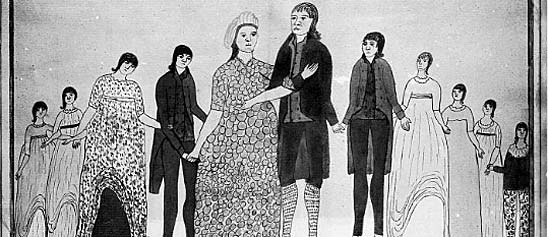Original artwork, of pages 6 and 7, for the book Rocky and His Friends, written by Ann McGovern with illustrations by Ben De Nunez and Al White, and published by Golden Press in New York, New York, in 1960, 2nd Printing in 1973.Like many of the other artists that worked on Little
- Description (Brief)
-
Original artwork, of pages 6 and 7, for the book Rocky and His Friends, written by Ann McGovern with illustrations by Ben De Nunez and Al White, and published by Golden Press in New York, New York, in 1960, 2nd Printing in 1973.
-
Like many of the other artists that worked on Little Golden Books, Ben De Nunez worked as an animator at Disney Studios from 1955 to 1961. Information on Al White is limited but we do know he worked at Disney at some point and was the “background” illustrator for Little Golden Books from 1959-1964. White’s illustrations for Little Golden Books includes, Top Cat, Ruff and Reddy and Bozo Finds a Friend.
-
The techniques used to create the 2-d images limited the animator who created images with strong, well defined outlines and flat colors, but with the more complex 3-d process used for book illustrations, the illustrator had more freedom and created characters that became part of the background, blending both techniques to create a more 3-d image. De Nunez was known as a character illustrator and White was a background illustrator. Despite the difference in artistic styles, both illustrators worked together to create a unified picture.
-
The introduction of TV into the home had great impact on American society and culture, and its impact on Little Golden Books was no exception. In the 19th century consumer products such as toys, books and games were already used as a tie-in to historical events, sports and famous people, and this phenomenon was expanded with the introduction of radio, movies and television. These new means of communication generated a whole new cast of characters and the impact on Golden Books was significant. A license with Walt Disney granted Little Golden Books the right to publish stories about some of Disney’s earliest creations, including favorites such as Snow White, Pinocchio, Dumbo and Sleeping Beauty. Moreover, the books began to feature television personalities like Howdy Doody, Roy Rogers and Captain Kangaroo, as well as popular Saturday morning cartoon characters like Woody Woodpecker, Bugs Bunny and Huckleberry Hound. These new partnerships with Warner Bros. and Hanna-Barbera significantly reduced the development of original stories and instead the books featured stories taken from children’s television shows. This opened the flood gates to create consumer products associated with popular movie and cartoon personalities. This practice continues today and proves to be a very lucrative endeavor.
- Location
-
Currently not on view
- Date made
-
1960
- maker
-
De Nunez, Ben
-
White, Al
- ID Number
-
1992.0634.089.04
- accession number
-
1992.0634
- catalog number
-
1992.0634.089.04
